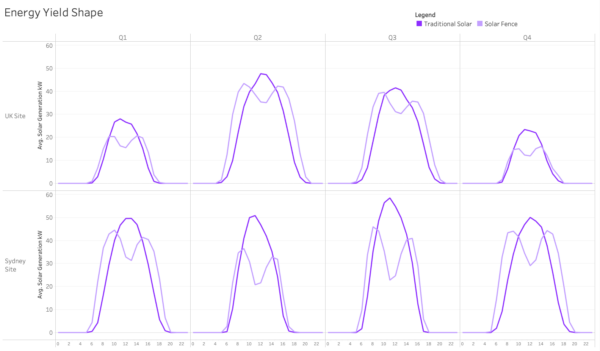Australia's Gridcog has revealed that solar fences – effectively, bifacial panels oriented east and west at 90-degree tilt angles – demonstrate promising yield and revenue potential, based on simulations comparing a vertical install to a typical ground-mount solar system.
Gridcog, which provides software to plan, track and optimize distributed energy projects, created two scenarios in the simulation: one using conventional solar and one using a solar fence configuration. It then modeled sites in London and Sydney against both scenarios and ran a one-year model against typical irradiance data for each location.
The conventional solar utilised 100 kW (DC)/100 kW (AC) systems for both sites using monofacial panels. London was oriented 180 degrees south and Sydney at 0 degrees north, both with a tilt of 40 degrees.
Popular content
The solar fence scenario comprised 100 kW (DC)/100 kW (AC) of bifacial panels. The systems were oriented 90 degrees east/180 degrees west at a tilt of 90 degrees, perpendicular to the ground.

To continue reading, please visit our pv magazine Australia website.
This content is protected by copyright and may not be reused. If you want to cooperate with us and would like to reuse some of our content, please contact: editors@pv-magazine.com.



Would be great if the vertical panel fence lines could be made to be mobile relocateable for agriculture changes and seasons?